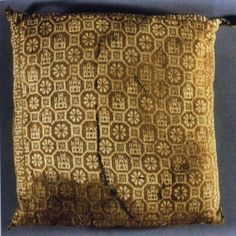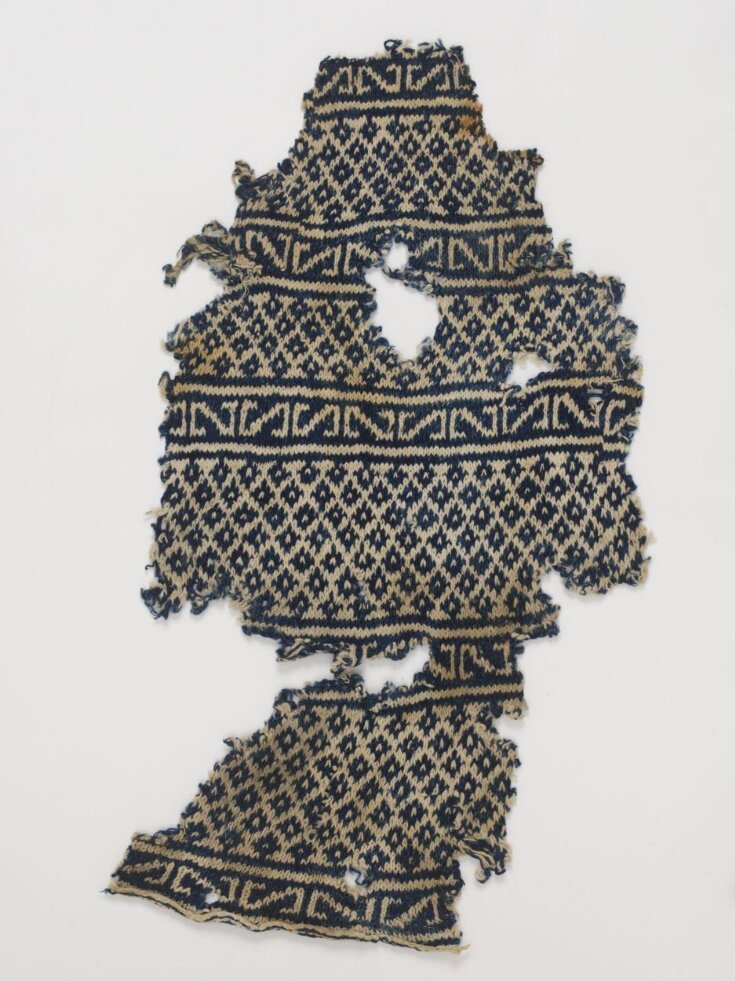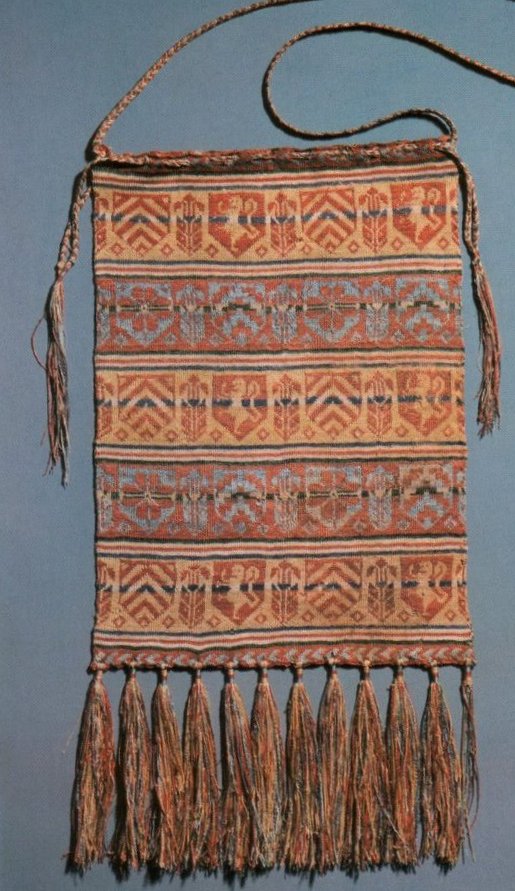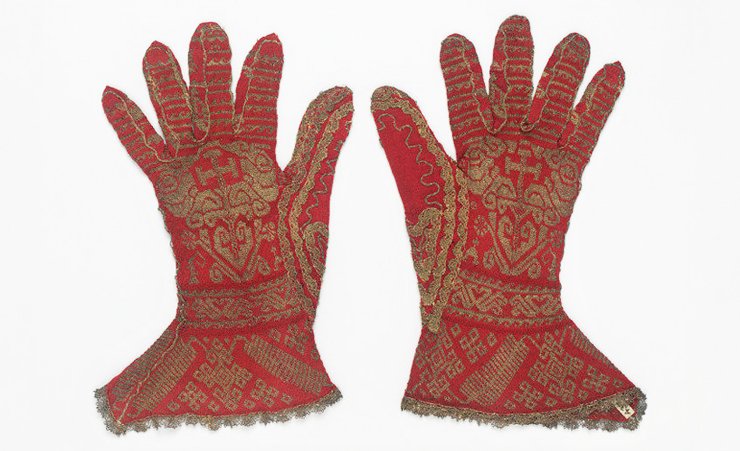The first in a series of four posts on the origins of and developments in hand knitting
Knitting as we know it today involves working a strand of yarn on two or more needles to produce rows or rounds of a fabric of interlocking loops. The earliest example is believed to date to around 1100 A.D. Blue and white Islamic stockings and knitting fragments appear in a number of museum collections. Most are cotton, all worked from the toe up, and most are known to have come from Coptic Egypt. Exact dating is difficult, but they are believed to date from 1200-1500 A.D. Several of the stockings have bands with Arabic script that has been used ornamentally.
Single-needle knitting, or nålbinding, is thought to have preceded knitting by up to a thousand years, and was known in Africa, Scandinavia, and other areas. Samples of nålbinding have often been misidentified as knitting due to the similarity in appearance of the finished fabric. Nålbinding technique involves using a single needle with an eye, and short lengths of yarn, to create a stretchy fabric.
The earliest examples of knitting in Europe have been dated to the late 13th century and characterized as being influenced by Islamic art and script. It has been difficult for historians to establish actual dates for the appearance of knitting as a craft as there are so few examples in museums and the fragments that do exist are often in such poor condition that they cannot definitively be identified as knitting.
Knitted tomb pillow covers and gloves were discovered in Spain in the tomb of the Prince of Castille, who died in 1275. There are thoughts, but no agreement, that they may actually have been made by a Muslim knitter who worked for the royal family. A number of other knitted accessories and garments dating from the mid-13th century were found in Spanish cathedral collections.

Other documented knitted items also date from this time, including six pieces known as Chur purses. They were found farther north in Europe, in an area that is now along the border of Germany and Switzerland. They are considered to be of 14th century origin, and as with the tomb pillow covers from Spain, they were knitted in the round.
Knitted liturgical gloves, in a cathedral collection in Toulouse (France), have been dated to the 13th century. (Note that the gloves pictured below are likely of Spanish origin) . Even farther north, a knitted fragment that was likely part of a mitten cuff was excavated in Estonia. The fragment also has been dated to the 13th century.
Next up: The development of knitting in Europe before 1600
Sources
Buss, Katharina. Big Book of Knitting. New York: Sterling Publishing Co., Inc., 2001.
Coleman, Ava T. “How It All Began.” TKGA.com. Cast On August-October 2008: 12-13. 28 August 2016 https://tkga.site-ym.com/global_engine/download.asp?fileid=AC65D860-440E-4B58-B61D-5AA5D4FE9577&ext=pdf
Forte, Mary. “Fair Isle: A Quick History.” TKGA.com. Cast On February-April 2009: 10-11. 28 August 2016 https://tkga.site-ym.com/global_engine/download.asp?fileid=C803C6CC-8258-4801-AB91-8F38219A1AF7&ext=pdf
Gibson-Roberts, Priscilla A., and Deborah Robson. Knitting in the Old Way: Designs & Techniques from Ethnic Sweaters. Fort Collins, CO: Nomad, 2004.
Macdonald, Anne L. No Idle Hands: the Social History of American Knitting. New York: Ballantine, 1988.
Nargi, Lela. Knitting around the World: A Multistranded History of a Time-honored Tradition. Minneapolis: Voyageur, 2011.
Rutt, Richard. A History of Hand Knitting. London: B. T. Batsford Ltd, 1987.



